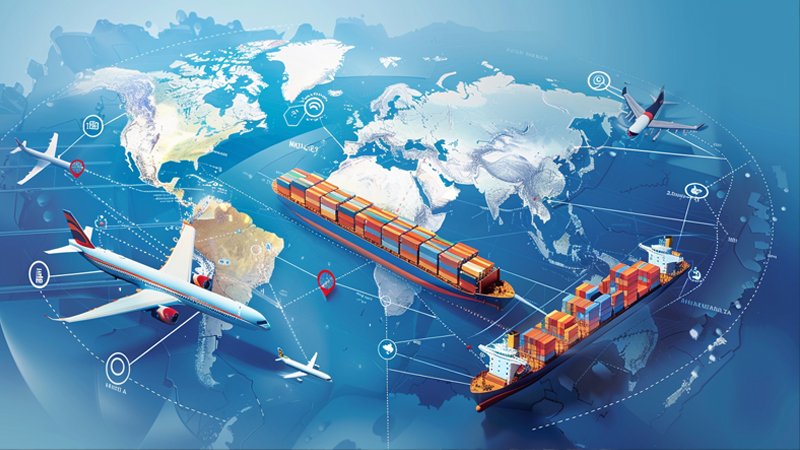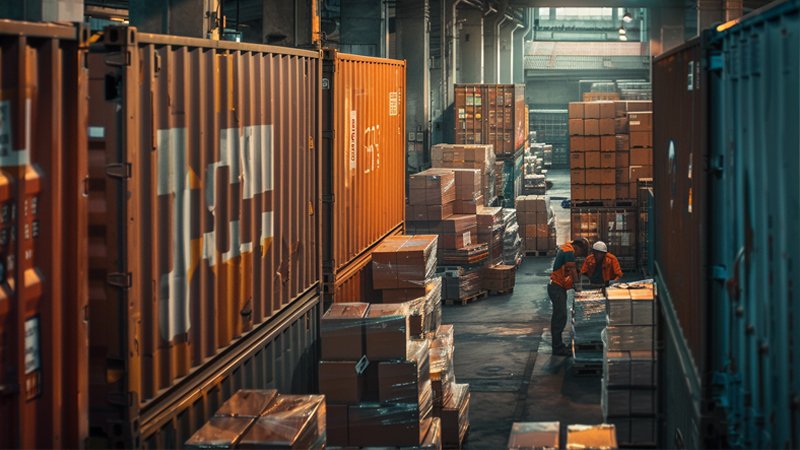
I recently explored several budget-friendly shipping methods from China and discovered practical ways to lower costs without sacrificing reliability.
Affordable shipping from China is possible by using cost-effective methods such as LCL consolidation, careful route planning, and strategic carrier comparisons.
Let’s break down these strategies and explore how to save on shipping expenses.
What are the most affordable shipping options available from China?
I learned that many affordable options exist, including sea freight1, rail shipping2, and economy air freight3 for various needs.
Cost-effective options include sea freight for bulk shipments, rail for balanced cost and speed, and economy air freight for urgent, lightweight loads.

When I started researching affordable shipping, I was surprised by the variety of options available. Sea freight remains the most popular for heavy and bulky loads because it offers the lowest cost per kilogram, especially when shipping in large quantities. Although it takes longer, it is ideal if you plan your shipments well in advance.
Rail shipping has emerged as a strong alternative, particularly for routes where transit times are moderately shorter than sea freight. It strikes a balance between cost and speed, making it an attractive option for businesses that need reliability without the premium cost of air freight.
Economy air freight is another option for smaller or lighter shipments that require faster delivery. Despite being more expensive than sea or rail, its lower priority pricing for non-urgent shipments can still offer savings if your shipment size is small enough.
I found that understanding these methods and matching them to your shipment's needs is key. A table helps illustrate the differences:
| Shipping Method | Key Benefit |
|---|---|
| Sea Freight | Lowest cost for large volumes |
| Rail Shipping | Balanced cost and faster transit |
| Economy Air | Quick delivery for small, urgent loads |
These options allow you to choose a method that best fits your budget and timeline, ensuring you don’t overpay for shipping.
How can you reduce costs by utilizing consolidated shipping methods like LCL?
I discovered that consolidating shipments with LCL can significantly lower costs by sharing container space with other shippers.
LCL shipping reduces expenses by combining multiple small shipments into one container, optimizing space and lowering per-unit costs.

My research revealed that Less than Container Load[^4] (LCL) shipping is a powerful way to save money, particularly when your shipment does not fill an entire container. By consolidating shipments from different suppliers or orders, you share the container cost with others, which dramatically reduces the expense per kilogram. I remember coordinating an LCL shipment for a small business order—it was impressive to see how much we saved compared to booking an entire container.
In addition to cost savings, LCL offers flexibility, allowing you to ship smaller batches more frequently without waiting to accumulate a full container load. However, it’s important to note that LCL shipments might involve more handling and longer transit times because of the consolidation and deconsolidation process. To mitigate these challenges, I always ensure my freight forwarder[^5] has a strong track record in managing LCL shipments efficiently.
Effective communication with your forwarder is crucial. Ask for detailed quotes and inquire about potential surcharges. Also, check if the provider offers integrated tracking systems so you can monitor your consolidated shipment’s progress.
| LCL Advantage | Benefit |
|---|---|
| Cost Sharing | Reduced per-unit shipping cost |
| Flexible Scheduling | Ship smaller batches more frequently |
| Efficient Consolidation | Minimizes waste of container space |
By leveraging LCL, I’ve managed to keep shipping costs low while still meeting my business demands.
Which shipping methods offer the best cost savings for your needs?
I learned that the best cost savings depend on your shipment size, urgency, and budget, with sea freight and rail shipping often leading the way.
Sea freight and rail shipping typically offer the best savings for large, non-urgent shipments, while economy air freight serves smaller, faster needs.

When comparing shipping methods, I consider several factors. Sea freight usually wins in terms of cost efficiency for heavy, bulk shipments due to its low rate per kilogram. This method is ideal if you have a flexible timeline. Rail shipping offers a middle ground—it is faster than sea freight but still much cheaper than standard air freight. This option is particularly useful for shipments destined for inland locations.
Economy air freight, while more expensive per kilogram, can be cost-effective if the shipment is small and requires speedy delivery. I balance these factors by considering both the monetary cost and the opportunity cost of delayed delivery. For instance, if a delay could impact my sales significantly, paying a bit extra for faster transit might be justified.
I also analyze past shipping data to forecast costs and decide which method aligns best with my needs. I often use online calculators and request quotes from multiple carriers to get a clear picture of current market rates.
| Method | Ideal For |
|---|---|
| Sea Freight | Large, non-urgent bulk shipments |
| Rail Shipping | Moderate volume with balanced speed |
| Economy Air | Small, urgent shipments |
Evaluating these methods carefully helps me pick the most cost-effective solution for each unique shipment.
How can you compare the costs and benefits of different shipping options to find the most economical choice?
I discovered that thorough comparisons involve analyzing quotes, transit times, service reliability4, and hidden fees5.
To compare shipping options, examine detailed quotes, evaluate transit times, check for hidden fees, and consider the provider's reliability.

When I needed to decide on the most economical shipping option, I started by gathering detailed quotes6 from several carriers. This step allowed me to compare base costs, additional surcharges, and potential discounts. I then considered transit times and how they aligned with my business needs. For example, a slightly higher cost might be acceptable if it meant significantly faster delivery, particularly for time-sensitive products.
I also evaluated the reliability of each carrier. Reading reviews and asking for references helped me understand each provider’s track record. Sometimes, the cheapest option on paper wasn’t the best if it came with frequent delays or poor customer service. I used a simple table to compare key factors:
| Factor | What to Evaluate |
|---|---|
| Base Cost | Initial quote per kilogram or container |
| Additional Surcharges | Fuel, handling, and customs fees |
| Transit Time | Expected delivery time |
| Service Reliability | On-time performance and customer reviews |
This approach ensured that I didn’t overlook hidden costs and provided a balanced view of each option’s pros and cons. In one instance, after comparing multiple quotes, I chose a provider that offered a slightly higher rate but guaranteed on-time delivery and better tracking features. This decision ultimately saved me money by preventing delays and lost sales.
By comparing these factors comprehensively, I can confidently choose the most economical shipping option that meets my needs.
Conclusion
Smart comparisons, LCL consolidation, and careful method selection are key to affordable shipping from China.
-
Learn about LCL shipping to see how it can optimize your shipping strategy and reduce costs effectively. ↩
-
Discover key factors to consider when choosing a freight forwarder to ensure efficient handling of your LCL shipments. ↩
-
Discover when economy air freight is the best option for urgent shipments and how it can save you money. ↩
-
This link will provide insights into assessing the reliability of shipping services, ensuring you choose a dependable carrier. ↩
-
Understanding hidden fees is crucial for accurate cost comparisons; this resource will help you identify them. ↩
-
Exploring this resource will help you understand how to effectively gather and compare quotes for better shipping decisions. ↩




